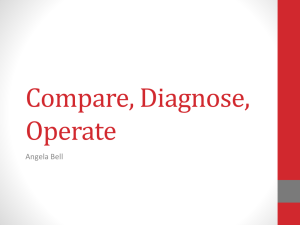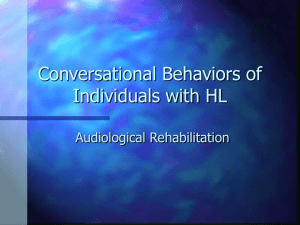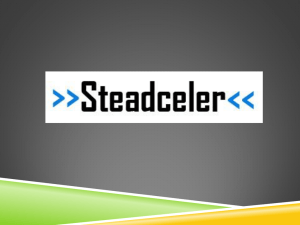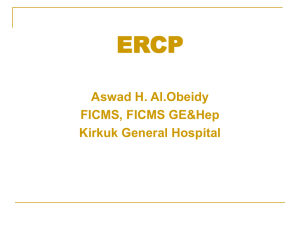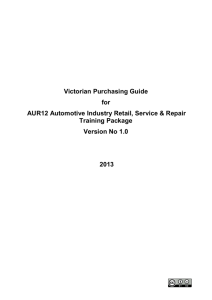Surgical management of bile duct injuries
advertisement
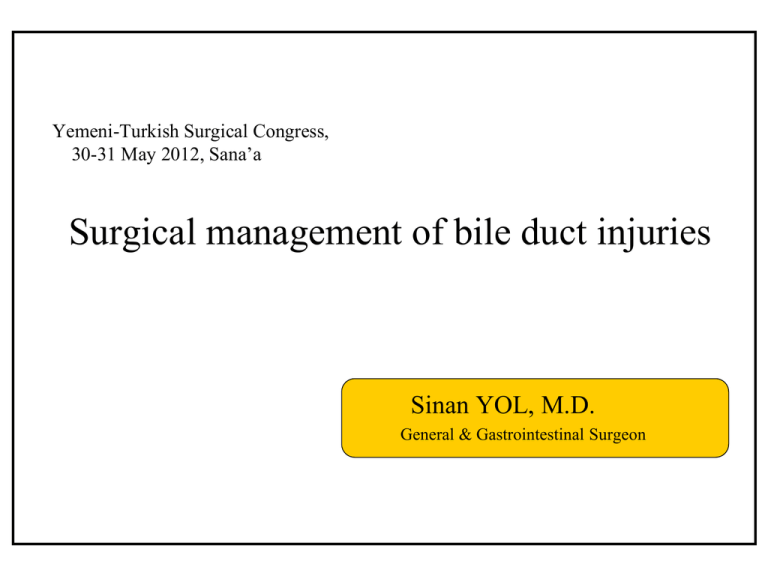
Yemeni-Turkish Surgical Congress, 30-31 May 2012, Sana’a Surgical management of bile duct injuries Sinan YOL, M.D. General & Gastrointestinal Surgeon Aim of the laparoscopic cholecystectomy • Surgey (TODAY) Uncomplicated Work (NEXT WEEK) Aim of the laparoscopic cholecystectomy Surgery (TODAY) Complicated / Injury Long hospital stay Repeated investigations like USG and ERCP Radiologic interventions Re-operations Even liver transplantation Bile duct injury • Prevention should be the main point (much more important than the treatment) • ALL laparoscopic cholecystectomies ARE difficult! – None of them is easy! • If injury occurred, … who should treat it? when should it be treated? how should it be treated? Bile duct injury classification (bismuth ve strasberg) Treatment If possible, diagnose the injury during the surgery! When you realised that there is an injury, ASK for HELP! If possible do not try to repair, even you are experienced. An experienced and FRESH surgeon should repair the injury. If it is impossible AND it is a difficult injury that you can not treat, place catheters and refer the patient. Intraoperative repair Conversion! We do not like and do laparoscopic repair, if it is not so simple. There is no ‘Tissue Lost’, primary repair over T-tube??? stricture rate is high!!! There is ‘Tissue Lost’, biliodigestive anastomosis: choledocoduodenostomy / hepaticojejunostomy Intraoperative repair Intraoperative repair How long you should keep the T-tube? Previously it was 6 months to 1 year. Now, after 2 or 3 week, we do ERCP and place plastic stents (if possible more than one). Post-operative diagnosed injury Operation detail is important. It is very common that each surgeon says there was an anomali which is not true. Variations: Post-operative diagnosed injury Real anomali Post-operative diagnosed injury Biliary leak OR obstruction (type of injury) Physical examination (treat the patient, not laboratory values!) There is bilioma / sepsis or not accompanying injury? Post-operative diagnosed injury First control the leak (percutaneous catheter placement, relaparoscopic drainage, open surgery, nasobiliary drainage etc.) and treat the peritonitis (or even sepsis). If the fistula is under control, give time for inflammation. Then try to diagnose the type of injury (MRCP, fistulography, ERCP, PTC) Diagnose Diagnose 40 y old, female Preoperative lab values N POD 3, Bilirubin increased USG minimal dilated bile duct EndoUSG : choledocholithiasis ERCP : stone extirpated Diagnose Leak from ductus cysticus (Strasberg A) Diagnose and treatment Leak from ductus cysticus (Strasberg A) Nasobiliary drainage Diagnose ERCP Complete obstruction Diagnose PTC (Strasberg E2) Diagnose MRCP (Strasberg E3) Diagnose Arteriography (RHA injury) Surgical repair Choledocho-choledochostomy Surgical repair Choledocho-duodenostomy Surgical repair Hepatico-jejunostomy (Roux-en-Y) Surgical repair Double lumen hepatico-jejunostomy (Roux-en-Y) Surgical repair Formation of one anastomosis Surgical repair left hepatic duct anastomosis (Segment III / Hepp-Couinaud) Surgical repair Intrahepatic cholanjio-jejunostomy (Longmire) Surgical repair Permanent access hepatico-jejunostomy Percutaneous repair Endoscopy through permanent access Percutaneous baloon dilation Surgical repair Fistulo-jejunostomy Simple and short duration surgery for selected patients
